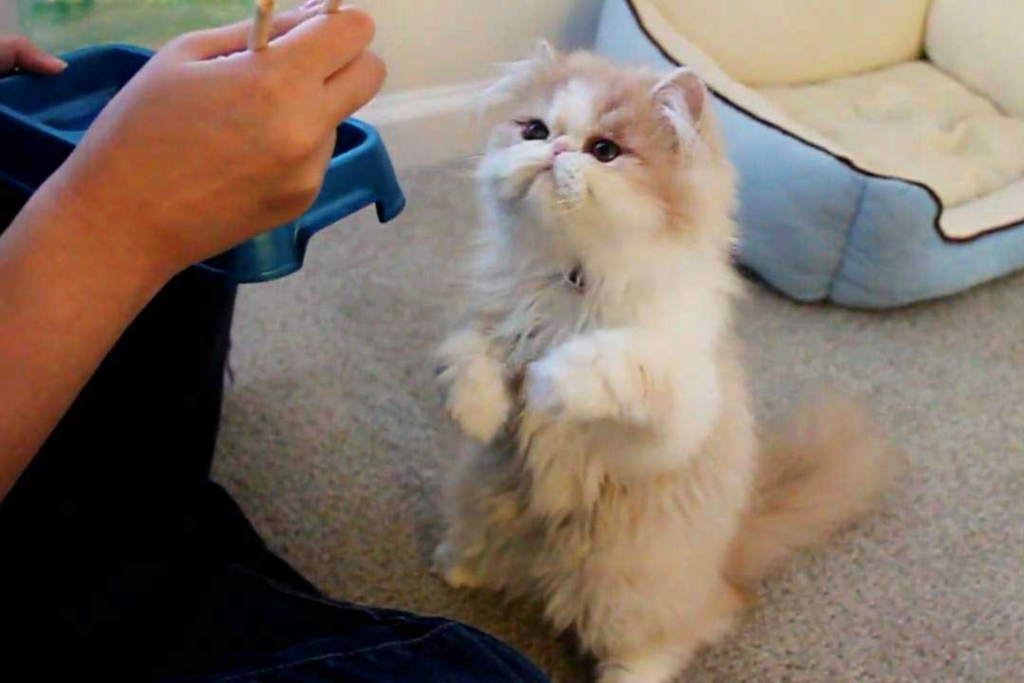Are you a proud owner of a Persian cat? Looking for some dos and don’ts to effectively train your fluffy companion? Well, you’ve come to the right place! In this article, we’ll delve into the world of training your Persian cat and give you some valuable tips to ensure a happy and well-behaved feline friend. But before we dive in, let me assure you that you’ll find all the reliable information you need right here on “http://persiancatdude.com”.
Training your Persian cat can be a rewarding experience for both you and your furry buddy. Whether you want to teach them basic commands or address behavioral issues, it’s important to approach the process with patience, consistency, and positive reinforcement. In our upcoming posts, we’ll discuss various training techniques and tips that will help you establish a strong bond with your Persian cat. From litter box training to leash training, we’ll cover it all. And hey, if you’re wondering what the most common questions about Persian cats are, don’t worry! We’ve got you covered. At the end of every post, we’ll provide you with 10 question and answers from the most common inquiries people have about Persian cats. So stay tuned for a plethora of useful information and practical advice to make your Persian cat training journey a breeze.
Training Your Persian Cat: Dos and Don’ts
Training your Persian cat can be a rewarding and beneficial experience for both you and your furry friend. Not only does it help establish a strong bond between you and your cat, but it also helps in providing structure and discipline to their daily routine. Whether you are a new pet owner or have had cats before, it’s important to understand the dos and don’ts of training your Persian cat to ensure a positive and successful experience.
Dos:
Do Use Positive Reinforcement:
Positive reinforcement is a key element in training your Persian cat. Rewarding your cat with treats, praise, or playtime when they exhibit desired behavior will encourage them to continue doing so. Whether it’s using a clicker or offering a treat, positive reinforcement creates a positive association with the behavior you want to reinforce.
Do Start Early:
It’s best to begin training your Persian cat at a young age. Kittens are more receptive to learning and adapting to new behaviors. Start with basic commands such as sit, stay, or come, and gradually progress to more advanced commands. Consistency and patience are crucial during the training process.
Do Keep Training Sessions Short and Fun:
Cats have short attention spans, so it’s important to keep training sessions short, ideally around 5-10 minutes. This ensures that your cat remains engaged and interested. Remember to make the training sessions fun and enjoyable by incorporating playtime and treats. Keep the atmosphere positive and avoid forcing your cat to do something they are not comfortable with.
Do Use Clicker Training:
Clicker training is an effective method for training your Persian cat. By associating a distinct sound, such as a clicker, with rewards, you can communicate with your cat and reinforce desired behavior. Clicker training enables precise timing and helps your cat understand exactly what they are being rewarded for.
Do Be Patient and Consistent:
Training takes time and consistency. Be patient with your Persian cat and understand that they may not learn a new behavior immediately. Consistency in your training methods and expectations will help your cat understand what is expected of them. Repeat commands and reward your cat consistently to reinforce the desired behavior.

Don’ts:
Don’t Use Punishment or Negative Reinforcement:
Avoid using punishment or negative reinforcement during training. Yelling, hitting, or any form of physical or verbal aggression can cause fear, stress, and anxiety in your Persian cat. This can undermine your training efforts and damage the trust between you and your cat. Remember, positive reinforcement and rewards are much more effective in training your cat.
Don’t Overwhelm Your Cat:
Training sessions should be short and focused. Avoid overwhelming your Persian cat with too much information or too many commands at once. Introduce new behaviors gradually and ensure your cat has mastered one command before moving on to the next. This will help prevent confusion and frustration.
Don’t Skip Litter Box Training:
Litter box training is crucial for the overall well-being of your Persian cat. Ensure that your cat is comfortably trained to use a litter box from an early age. Provide a clean and easily accessible litter box, and reward your cat when they use it correctly. Regularly clean the litter box to maintain hygiene and discourage your cat from eliminating outside of the designated area.
Don’t Force Your Cat into Unwanted Behaviors:
Respect your Persian cat’s boundaries and do not force them into behaviors or situations they are uncomfortable with. Each cat has their own personality and preferences. If your cat shows signs of stress or anxiety, take a step back and reassess your training approach. Training should be a positive experience for both you and your cat.
Don’t Give Up:
Training your Persian cat requires dedication and patience. There may be setbacks and challenges along the way, but don’t give up. Keep reinforcing desired behaviors, practicing consistency, and providing positive reinforcement. With time and effort, your Persian cat will learn and respond to your training efforts.
Remember, every Persian cat is unique, and training methods may vary depending on their personality and previous experiences. Stay attuned to your cat’s needs and adjust your training techniques accordingly. Training not only helps in creating a well-behaved cat but also strengthens the bond between you and your furry companion.

Common Questions about Training Persian Cats:
- How long does it take to train a Persian cat?
- Training duration can vary depending on your cat’s personality and their previous experiences. Some cats may pick up commands quickly, while others may take more time. Be patient and consistent, and your Persian cat will eventually learn.
- Can I train an older Persian cat?
- Yes, you can train an older Persian cat. While kittens are more receptive to learning, older cats can still learn new behaviors. It may take more time and patience, but with positive reinforcement, you can train your older Persian cat.
- What should I do if my Persian cat doesn’t respond to training?
- If your Persian cat is not responding to training, reassess your training methods. Make sure you are using positive reinforcement, keeping sessions short, and providing rewards that motivate your cat. If needed, consult a professional cat trainer for guidance.
- Should I use treats for training my Persian cat?
- Using treats as rewards during training can be effective. However, make sure to use treats in moderation and choose healthy options. Some cats may be motivated by playtime or verbal praise instead of treats.
- Can I train my Persian cat to walk on a leash?
- Yes, it is possible to train your Persian cat to walk on a leash. However, it requires patience and gradual introduction. Start by getting your cat comfortable wearing a harness, then slowly introduce them to walking on a leash indoors before venturing outside.
- Is it possible to train a Persian cat not to scratch furniture?
- Yes, it is possible to train a Persian cat not to scratch furniture. Provide appropriate scratching posts and redirect their attention to those whenever you see them scratching furniture. Use positive reinforcement and reward them when they use the scratching posts.
- Should I hire a professional cat trainer to train my Persian cat?
- Hiring a professional cat trainer can be beneficial, especially if you are facing difficulties in training your Persian cat or if you want to teach them advanced behaviors. A professional trainer can provide guidance and tailor training methods to suit your cat’s needs.
- Can I train my Persian cat to come when called?
- Yes, you can train your Persian cat to come when called. Use their name and offer treats or praise when they respond to the command. Start in a quiet and familiar environment before practicing in more distracting areas.
- Is it possible to train a Persian cat to use a toilet?
- While some cats can be trained to use a toilet, it is not recommended for Persian cats due to their long fur and potential for hygiene issues. It’s best to stick to litter box training for your Persian cat.
- How often should I reinforce training with my Persian cat?
- Training should be reinforced consistently. Practice commands and reward your Persian cat frequently, especially during the initial stages of training. As they master behaviors, you can gradually reduce reinforcement but still provide occasional rewards to maintain the learned behaviors.

